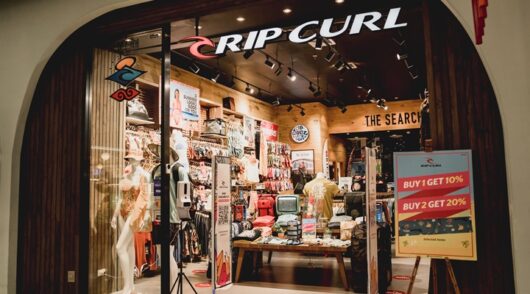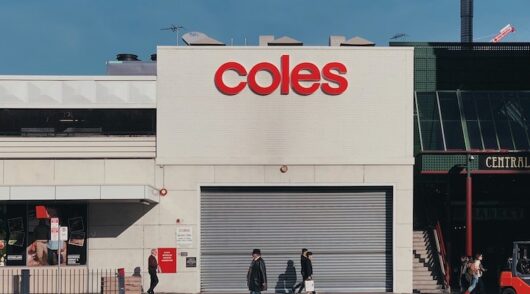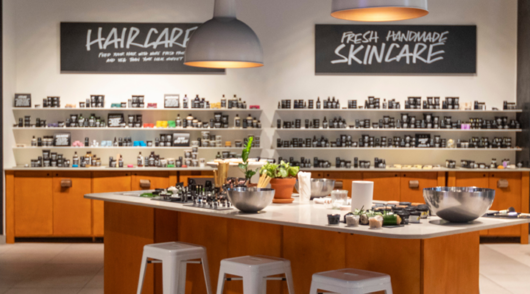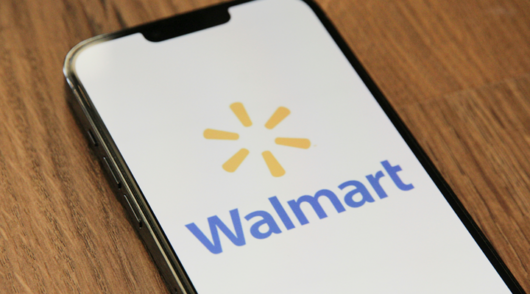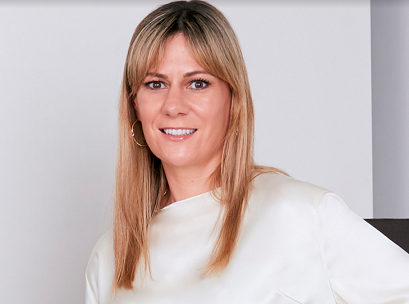 Erica Berchtold has officially taken the reins from Patrick Schmidt as CEO of The Iconic. She started at the company just last month, but already has some big ideas to grow the business. These are informed by her 20-plus years of retail experience, primarily in bricks-and-mortar businesses, such as Super Retail Group’s sportswear chain, Rebel, where she was CEO for the past seven years. During her tenure, she nearly doubled top-line sales, while maintaining EBIT margins of around 10 per cent, and she is now looking to bring similar long-term growth to The Iconic.
Erica Berchtold has officially taken the reins from Patrick Schmidt as CEO of The Iconic. She started at the company just last month, but already has some big ideas to grow the business. These are informed by her 20-plus years of retail experience, primarily in bricks-and-mortar businesses, such as Super Retail Group’s sportswear chain, Rebel, where she was CEO for the past seven years. During her tenure, she nearly doubled top-line sales, while maintaining EBIT margins of around 10 per cent, and she is now looking to bring similar long-term growth to The Iconic.
The online-only fashion retailer recently posted a strong 2018, achieving double-digit market share and record traffic and growing its range to more than 1000 brands and 60,000 products. Last year, it reported $267.8 million in sales in 2017, a 35 per cent increase over 2016, for a total loss of $9.7 million. The Iconic said at the time that it was working towards profitability.
We spoke to Berchtold about her plans to grow the business in 2019, and what insights she is bringing from her bricks-and-mortar background to the pureplay retailer. And with International Women’s Day occurring on March 8, we also asked about how she thinks businesses can better support women into leadership roles in retail. Below, the mum of two – soon to be three – makes the case for flexible working policies.
Inside Retail Weekly: I know you just started at The Iconic a few weeks ago, but is there anything you’ve observed about the way the business operates that stands out to you as being different from other retailers?
Erica Berchtold: I know a lot of retailers talk about customer centricity – it’s a bit of a catchphrase at the moment – but it really strikes me that every area of this business is really thinking about how they can improve the customer journey or fix a customer pain point. I don’t know if it’s because we’re so measurable here. We can measure whether we’re doing a good job or bad job every second of the day, but even from a tech perspective… For example, I had a meeting with the tech team the other day, so they could bring me up to speed with what they do, and they were so far removed from what my expectations and experience of a typical IT or digital team has been at many different retailers. They’re like customer solution architects. They’re constantly thinking about how they can make the app better or fix a process or improve the load time of the website. It’s amazing to see that even that part of the business truly has the customer journey and customer experience at the heart of what they do.
IRW: How does that play out in the fulfilment centre? Since The Iconic doesn’t have any bricks-and-mortar stores, you might call that the ‘shop floor’.
EB: In an online retailer, you’re dealing with returns in a different way. I don’t think it’s any secret to say that online retailers are dealing with a higher return rate than bricks-and-mortar. I think that’s the nature of how the customer is purchasing, they’re not trying on before buying. So we’ve got people [in the fulfilment centre] who are dealing with product coming back, and they’re fully focused on how quickly they can process it, so the customer can get their money back.
Looking at the people who are actually dispatching the orders, they’re looking at how they do that in an ethical and sustainable way, the amount of packaging we use, and if there’s a better way of doing that moving forward.
Then there’s the call centre. Some of them are based here [in Sydney] and some of them are based there [at the fulfilment centre]. I can’t tell you how many businesses in Australia have customers who sit on hold for 10 minutes, 15 minutes, 20 minutes… If our customers are on hold for more than a minute, our team is really stressing out. They’re thinking, ‘We’re letting our customer down, we need to answer that call.’
And if you just think about the magnitude of how much product we’ve got out there. I guess if I looked at a retailer and stacked up every shop floor one after the other, it would look pretty enormous. But the size of our fulfilment centre – and we just doubled the space to 40,000sqm – and is pretty amazing. And it’s only going to get bigger.
IRW: How are you looking to grow the business in 2019?
EB: There’s no doubt that we’re very very strong on the women’s side of things, but we still see further opportunities there. I think the men’s category is an area where we definitely see some new opportunities. The Iconic has had sport for quite a while now, but I think we’ve only touched the surface of that, and I certainly feel qualified to make that comment.
Our kids category is pretty new, we launched in August of last year, but just looking at the brand availability, there’s an enormous opportunity. You don’t tend to go on and buy one item. When you’re shopping for your kids, you’re looking for whole outfits, so I think there’s a bit more we could deliver there. We have around 1000 brands in our business to date, and I think there are still opportunities for more.
IRW: How do you think your experience in bricks-and-mortar retail might inform your decision-making at The Iconic?
EB: We already know that customers are doing a lot of research online even with traditional retailers. They’re certainly using brands’ websites, which is why the conversion rate in a traditional retailer is much lower than what ours would be, because a lot of customers go online to have a look at a product, research a bit, find out where their closest store is and check their stock levels. But there’s so much more that happens in-store as well. The way you interact with the customer, the way you fit them for a pair of running shoes, or the way you build an outfit together or show them new technology. I think there’s a way we can provide that service to customers in an online sense. It’s about looking at all the different customer journey points and ticking them off one by one. I’m even more confident now than when I started that there’s a way to automate things to satisfy the customer journey. We know that’s where it’s headed, and I think we’re really poised to own that space.
IRW: Do you mean from a technology perspective? As in you, how to support those customer journey points online?
EB: We’ve already got some really cool features at the moment on our website and in our app. There are some great algorithms on there, where you enter the size you wear for particular brands, like Nike or Camilla or whatever the brand is, and it will recommend a size in the brand you’re shopping.
And I personally love our ‘follow a brand’ feature. Sometimes I don’t want to look at a broad assortment. [This feature] is like I’ve created my own Instagram feed with just the brands I love. So I can look at what’s new or what’s happening with those brands. The other feature that I think is really amazing – and I’ve shown all my friends this because they didn’t realise we had it – is ‘snap to shop’. You can actually take a photo of someone wearing something and, through the app, we’ll find something that matches it on our website. I actually tried it with my dad. He had on a daggy old blue polo shirt, and it recommended some very nice Polo Ralph Lauren polo shirts instead. So we’ve already started that journey.
But the thing with all these technologies is you need to sift through them to find the ones that actually make sense for the customer, because some of them are gimmicks. It’s the same with in-store technology. You can blow a lot of cash on those things, and they don’t actually mean much to the customer. So for us, it’s about what I said before: listen to what the customer is telling us their issue is, and try to find a solution for that.
IRW: As an industry, retail has a high rate of women in the workforce, but they’re underrepresented at the executive level. What do you think businesses should be doing to support more women into leadership roles?
EB: I think providing women with mentors is important. Not just from a business sense, but how to achieve that work-life balance. Most women I speak to want to know how I balance a young family with work. They’re not asking me for professional advice – I certainly get that as well – but it’s more about how to juggle it all. I’ve got my little hints and tips of what to do there. I think flexible working hours are important, especially for women who want to be a caregiver for their kids or drop them off at school. It’s just not practical to say you have to work 9-5.
Flexibility [is important] because otherwise you might find that some women decide not to take the professional opportunity, and focus more on the personal aspects of their life, and I think that’s a real shame because you might be missing out on some really great talent.
I think it’s also important not to assume that every woman is a mother or wants to be a mother. That’s not always the case. People are on different paths, so you don’t want to pigeonhole women or generalise. But if they are a mother or want to become a mother, it’s not going to diminish their intelligence or capabilities. I often say to people, ‘It’s amazing how they let you keep your brain these days when you give birth.’ It’s a bit tongue in cheek, but there are people who think you’re going to be less motivated or less intelligent [after having a child], and it just doesn’t work like that.
IRW: I understand you’re pregnant with your third child at the moment. Congratulations! Are you comfortable talking about your plan to take time off after the birth?
EB: I’m planning to take two months of maternity leave. I’m very fortunate that I’ve inherited a really talented team who were used to [former CEO] Patrick [Schmidt] doing two roles for the last 12-plus months, as co-CEO of GFG [Global Fashion Group] and CEO of The Iconic. So it’s not as if the team here aren’t capable of holding the fort for a couple of months.
I really want to stress that I don’t feel any pressure by the business to take a short maternity leave. It’s just my personal preference. I know how to balance my work life, and I’m very fortunate the business offers some of those flexible working arrangements that will allow me to come back fairly quickly. The other great thing is I don’t have 160 stores I have to go and see and a parent company based in Brisbane that I have to travel to in order to attend meetings. The team is more than capable of holding the fort in my absence. I won’t be that far away, and it certainly won’t be for that long.

